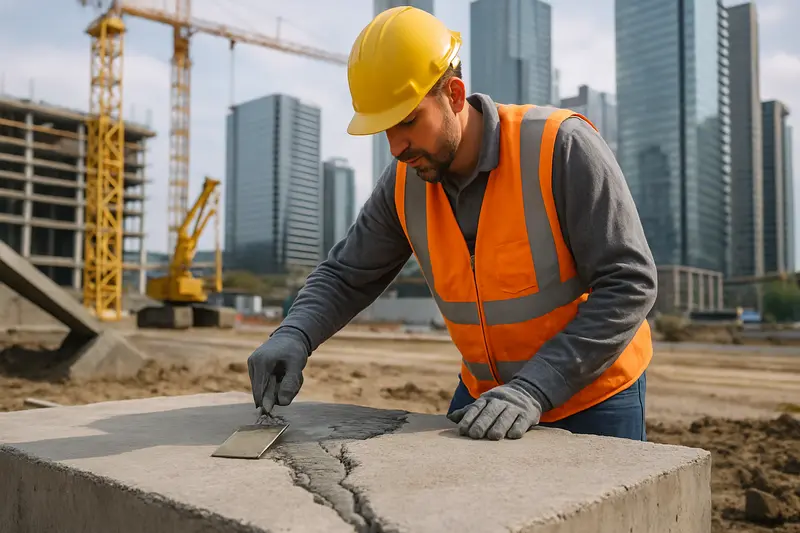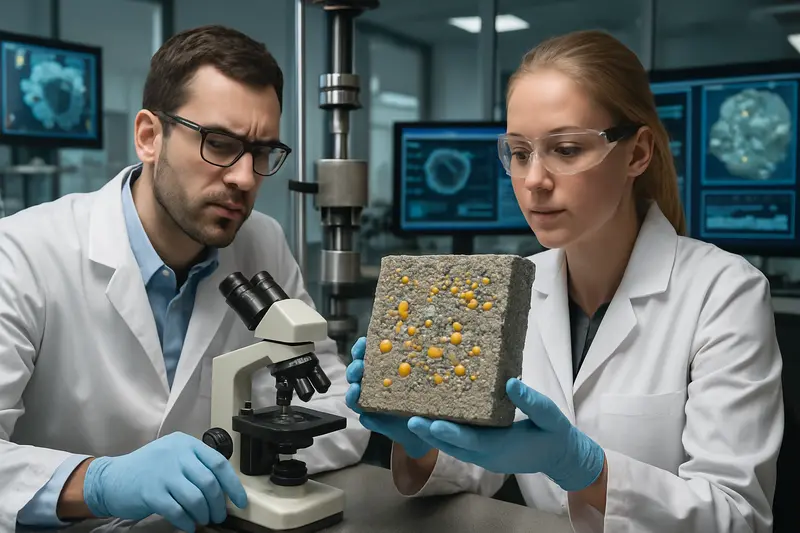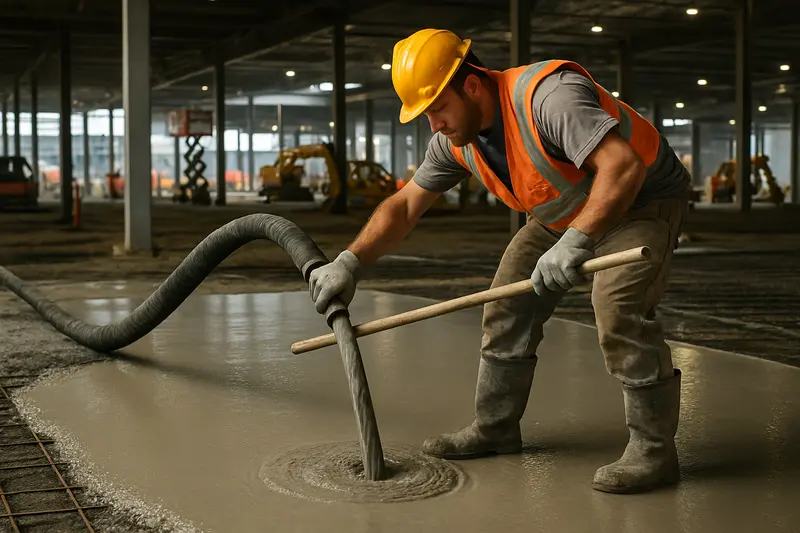
Self-Healing Concrete: Transforming the Construction Industry
Self-healing concrete is emerging as a game-changer in the construction sector, offering enhanced durability and longevity for structures. By leveraging advanced materials that autonomously repair cracks, this technology reduces maintenance costs and extends the lifespan of concrete structures. Construction companies, especially concrete contractors, are adopting this innovative solution to meet increasing demands for sustainable, resilient infrastructure. As the industry evolves, understanding the technical benefits and applications of self-healing concrete becomes essential for staying competitive in modern concrete construction projects.
Technical Foundation and Materials Behind Self-Healing Concrete

The development of self-healing concrete relies on sophisticated material science that integrates biological and chemical mechanisms to address cracks and deterioration proactively. In a cutting-edge laboratory setting, researchers carefully analyze advanced concrete samples embedded with microcapsules containing healing agents and specialized bacteria capable of producing calcium carbonate. This high-resolution, photo-realistic environment showcases engineers in lab coats meticulously observing the behavior of these materials under simulated stress conditions.
The microcapsules within the concrete act as tiny reservoirs of repairing agents, which are released when nanoscale cracks form, effectively sealing the fissures before they compromise structural integrity. These microcapsules are engineered to withstand the mixing process yet rupture precisely when cracks emerge, ensuring targeted healing. Bacteria, on the other hand, are integrated within the concrete matrix in a dormant state; when cracks allow moisture ingress, these bacteria become active, secreting limestone or other mineral compounds that fill and reinforce the compromised areas.
This hybrid approach combines chemical encapsulation with biological remediation, forging a durable, self-repairing material. The laboratory environment captures the complexity of interactions between these agents and the surrounding cementitious matrix. Engineers analyze the performance of different formulations, adjusting the concentration of microcapsules or bacterial populations, to optimize healing efficiency and longevity. Advanced imaging techniques and material testing equipment help quantify crack sealing, strength recovery, and the overall durability improvements.
Understanding the material composition behind self-healing concrete clarifies its potential to reshape the construction industry. By embedding intelligent, responsive materials directly into the concrete mix, the need for frequent repairs diminishes significantly, reducing maintenance costs and extending a structure’s lifespan. For those interested in broader innovation in concrete technology, exploring discussions on construction technologies of 2025 offers valuable insights.
This convergence of microencapsulation, microbiology, and cement chemistry signifies a major stride toward more sustainable and resilient infrastructure, positioning self-healing concrete as a key material for future construction endeavors.
Impact of Self-Healing Concrete on Construction Practices and Long-Term Durability

At a bustling construction site, a skilled concrete contractor meticulously applies self-healing concrete to a large industrial floor slab. Cranes hover overhead, lifting heavy equipment, while modern machinery whirs in the background, symbolizing a shift toward innovative building practices. The scene exemplifies how these advanced materials are integrated into large-scale projects, emphasizing both efficiency and resilience. Self-healing concrete transforms traditional construction by reducing maintenance periods and extending the lifespan of structures. The application process at this site highlights the material’s practicality; microcapsules or bacteria embedded within the concrete activate when cracks form, autonomously repairing damage and preventing water ingress or corrosion. This not only enhances durability but also minimizes costly repairs over time. Construction practices now lean toward incorporating these materials early in project planning, demanding a nuanced understanding of mixture designs and application techniques. Instead of waiting decades for visible deterioration, contractors can deliver more sustainable and long-lasting structures from the outset. The scene underscores how this technology influences project timelines—less downtime for repairs means faster completions and safer work environments. Long-term durability is significantly improved through self-healing mechanisms that address microcracks before they expand, averting structural failures. Such advancements challenge conventional models, reinforcing the importance of adopting innovative materials that adapt dynamically to environmental stresses. As the construction industry embraces these breakthroughs, builders increasingly prioritize durability and sustainability—responding to the demands of modern infrastructure needs. For contractors seeking reliable, durable solutions, understanding how to integrate self-healing concrete into large projects is vital. Resources like reliable contractor networks and industry insight guides can streamline this transition. For example, checking this comprehensive guide can help ensure expert application, maximizing the benefits of self-healing technology while maintaining high standards of quality. Overall, the visible activity at this site illustrates a future where concrete not only withstands the elements but actively heals itself, leading to resilient, cost-effective construction that serves society for generations to come.
Final words
Self-healing concrete stands at the forefront of advancements in construction materials, offering unprecedented durability and reducing long-term maintenance costs. For concrete contractors, integrating this technology can significantly enhance project outcomes and client satisfaction. As demand for sustainable and resilient infrastructure grows, embracing self-healing concrete positions construction companies to lead in innovation and competitiveness. Staying informed about its technical developments and applications is essential for any forward-thinking concrete contractor aiming to excel in the evolving building landscape.
Find the Best Concrete Contractors in Houston
Learn more: https://concretecontractorshouston.com/contact/
About us
Join the Featured Listings on Concrete Contractors Houston and put your business in front of homeowners, builders, and businesses actively searching for concrete experts like you. As a Featured Contractor, your listing appears at the top of our directory—guaranteeing maximum visibility and making you the first choice in your service area.
